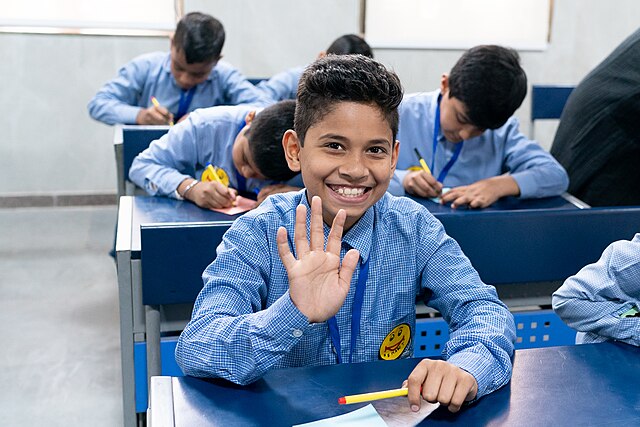In an earlier post we looked at the state of facilities in government schools as compared to private and aided schools in seven major cities in India based on the UDISE+ data from 2021-22. In this post, we look at the number of teachers, as well as students enrollment and how they vary across different management types and across the cities.
Teachers
The number of teachers in a school is an important parameter that affects the learning outcomes for students. More teachers also reduces the load on individual teachers leading to a stress-free teaching and learning environment.
The type of schools teachers prefer is also a reflection of the opportunities available in terms of remuneration, location as well as career growth.

Except in Delhi, across all cities, teachers seem to prefer to work in private schools. The difference is starkest in Pune, where private schools have more than twice the number of teachers as government schools despite government schools being twice the number of private schools . The situation is exacerbated in cities like Bengaluru and Hyderabad where the number of government schools is already low.
Teachers are hired as regular (full-time) workers, on contract or part-time. Across both government and private schools, regular teachers is the preferred mode.

Except in Delhi, more than 90% of teachers in government schools are regular employees, and the remaining tend to hired on contract. In Delhi, more than 20% of the teachers are hired on part-time basis.

The situation is different in private schools where in most cities, less than 90% of the teachers are regular employees and the shortfall is made up by contract teachers. Only in Hyderabad and Bengaluru, almost all the teachers in private schools are regular employees.
Enrollment in Schools
Similar to teachers, most of the parents prefer private schools for their children across the cities. Delhi is the only city to buck the trend.

The chart above is identical to the one on teachers. Pune also shows the same starkness where more than twice the number of students study in private schools despite there being less than half the number of government schools. Bengaluru and Hyderabad also show the higher preference for private schools. Only in Chennai the proportion of students is close to the proportion of schools.
The importance of government schools can be seen from the representation of marginalised sections of the society.

In all the cities considered, the percentage of SC students enrolled is at least double that in private schools. Similar trends can be seen with BPL students too.

Pupil-Teacher Ratio
Dividing the total number of students enrolled by the number of teachers gives us the Pupil-Teacher-Ratio (PTR). A lower PTR indicates better teaching outcomes as each teacher has fewer students to attend to.

Given the higher preference for private schools from teachers, the PTR is better in private schools in most Indian cities. Fewer teachers preferring government schools means that government schools suffer from high PTR challenges.
Only in Kolkata and Pune do the numbers balance out, but this is also a factor of the high proportion of government schools and parents preferring private schools overwhelmingly.
Looking across school types at the city level, we see that Kolkata performs the best on the PTR front, with Mumbai the worst. The government of India requires that PTR be ideally under 30, but except for Kolkata no other city comes close.

Conclusions
The UDISE+ data from 2021-22 for the major cities in India shows that teachers and students overwhelmingly prefer private schools over government schools. Given what we saw with facilities in government schools which lag behind their private counterparts, this is expected. However, this can become self-fulfilling as less preference for government schools can be used as a reason to reduce investment in them by their respective state governments, in turn exacerbating the situation.
The higher representation of SCs and BPL students in government schools emphasises the need to invest more in this sector as they can have a large impact on marginalised sections of our society.
Finally, all this comes together in the form of poorer PTR in government schools when compared to private ones, which again drives those who can afford them towards private schools.
The solutions are obvious. The lowest hanging fruit is recruiting more teachers for government schools which can drive up the enrollment and also improve the quality of education. But as seen across states, education is a fraction of the state budget, most of which is focused on large physical infrastructure projects.
Education and health are part of what is called social infrastructure. While we continue to deinvest in them, preferring to spend more on physical infrastructure, we will continue on the current trajectory of growth with little of it reaching the people.

